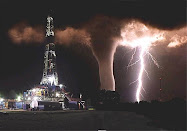Cosmic Catastrophes

We are used to personal impermanence, as undesirable as it may be. People, die, countries rise and fall, civilizations perish. But the good Earth under our feet is there to stay, yes? Well, no. The best scenario is that Sol, our own sun, will eventually expand to the orbit of Mars and cook our planet to a molten crisp. Why wait a billion years though? A nova could occur within a few tens of light years of us. Or an active black hole with just the right orientation could shine it’s polar death ray on us. Or a decent asteroid could visit at orbital speed and cause pasteurized planet.
If you follow astrophysics you probably know about those. What about these?
If life here was seeded by spaceborne particles, how about killer epidemics seeded by spaceborne particles? Water bears and cockroach eggs can survive in space. Why not alien cockroaches and virus spores? Oh, wait, someone wrote a book about that already (Andromeda Strain).
Still, we’re thinking too small.

Pillars of Hercules

Near Space
People seem to think of risks that are close by and easy to imagine. If it’s far away and I never heard of it I’m not going to worry about it, right? Um, no.
You do know that our galaxy, the Milky Way, is going to collide with an even bigger galaxy, Andromeda? Go ahead, you have plenty of time to finish your coffee. Have another cup.
The immense black hole in the center of our galaxy, Saggitarius A*, is currently out of things to suck in, so it is inactive. Stars and gaseous nebulae are circling it, however, and slowly falling in. Pretty soon it will form another accretion disk and that hot ring will blast x-rays, gamma rays and cosmic rays on every part of the Milky Way. There are gas clouds between us and that black hoe, but they won’t last long under the assault. That blast will go on for centuries.
Our universe has more than the 3 dimensions we can see. It has ten or eleven, depending on which version of M-theory you subscribe to today. The shape of our space is a Calabi-Yau manifold, a family of unimaginable multidimensional curves named after the mathematicians who described them. There is the possibility of a tear in some of those manifolds. It could be a propagating tear, like ice crystals forming in water that is below freezing. Drop an ice seed into supercold water. One instant we have clear water, the next, ice. A tear in space is a similar kind of phase change. A tear in the manifold would eat our lunch and the lunch box we came in. Once started, a tear in space would either propagate at the speed of light, in which case we might be able to see it coming, or at the speed of expansion of the Big Bang, in which case it will be so fast we won’t have any warning. Either way, the players all leave the stage, exeunt omnes.
There could be a tear on its way right now.
Come here, sweetie, daddy needs a last hug.
REALLY big things that could waste us
As a science fiction writer I have a macabre attraction to possible catastrophes. Not the kind of thing that could murder a lot of people, or even wipe out the human population of the Earth, but things that, at the very least, would wipe out the Earth and much more. There are too many of those phenomena and every one is a potential book plot.
We are used to personal impermanence, as undesirable as it may be. People, die, countries rise and fall, civilizations perish. But the good Earth under our feet is there to stay, yes? Well, no. The best scenario is that Sol, our own sun, will eventually expand to the orbit of Mars and cook our planet to a molten crisp. Why wait a billion years though? A nova could occur within a few tens of light years of us. Or an active black hole with just the right orientation could shine it’s polar death ray on us. Or a decent asteroid could visit at orbital speed and cause pasteurized planet.
If you follow astrophysics you probably know about those. What about these?
If life here was seeded by spaceborne particles, how about killer epidemics seeded by spaceborne particles? Water bears and cockroach eggs can survive in space. Why not alien cockroaches and virus spores? Oh, wait, someone wrote a book about that already (Andromeda Strain).
Still, we’re thinking too small.

Pillars of Hercules

Near Space
People seem to think of risks that are close by and easy to imagine. If it’s far away and I never heard of it I’m not going to worry about it, right? Um, no.
You do know that our galaxy, the Milky Way, is going to collide with an even bigger galaxy, Andromeda? Go ahead, you have plenty of time to finish your coffee. Have another cup.
The immense black hole in the center of our galaxy, Saggitarius A*, is currently out of things to suck in, so it is inactive. Stars and gaseous nebulae are circling it, however, and slowly falling in. Pretty soon it will form another accretion disk and that hot ring will blast x-rays, gamma rays and cosmic rays on every part of the Milky Way. There are gas clouds between us and that black hoe, but they won’t last long under the assault. That blast will go on for centuries.
Our universe has more than the 3 dimensions we can see. It has ten or eleven, depending on which version of M-theory you subscribe to today. The shape of our space is a Calabi-Yau manifold, a family of unimaginable multidimensional curves named after the mathematicians who described them. There is the possibility of a tear in some of those manifolds. It could be a propagating tear, like ice crystals forming in water that is below freezing. Drop an ice seed into supercold water. One instant we have clear water, the next, ice. A tear in space is a similar kind of phase change. A tear in the manifold would eat our lunch and the lunch box we came in. Once started, a tear in space would either propagate at the speed of light, in which case we might be able to see it coming, or at the speed of expansion of the Big Bang, in which case it will be so fast we won’t have any warning. Either way, the players all leave the stage, exeunt omnes.
There could be a tear on its way right now.
Come here, sweetie, daddy needs a last hug.


No comments:
Post a Comment